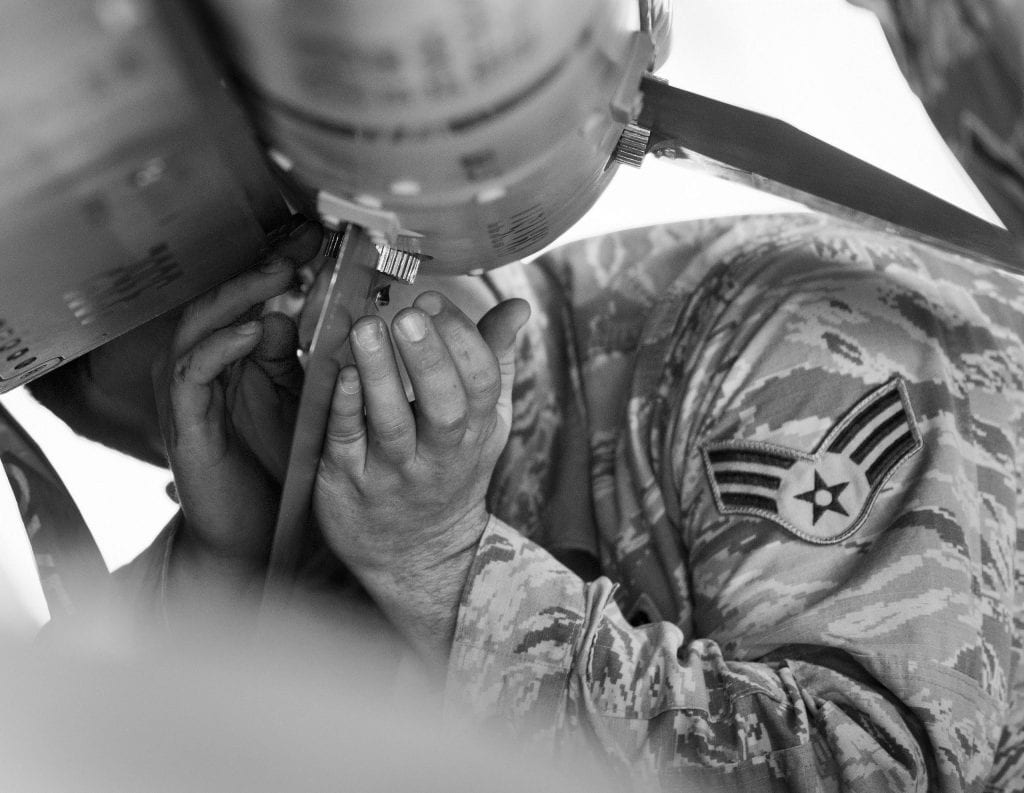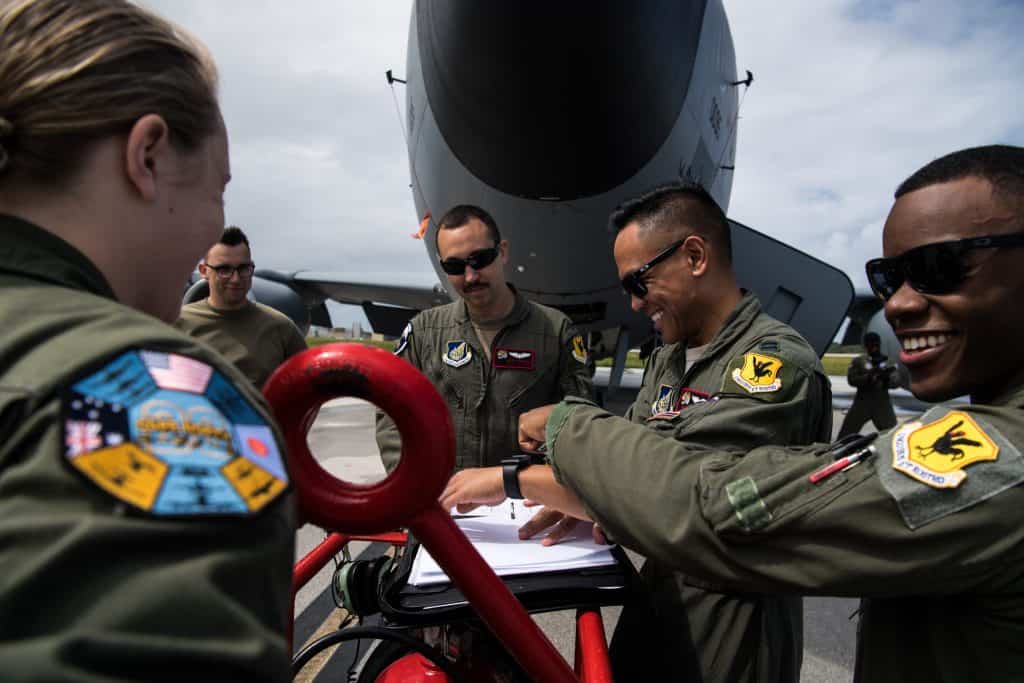The Basics: Understanding Air Force Rank Structure From an ANG Pilot Perspective

There are plenty of charts available online that illustrate the hierarchy of Air Force ranks and the insignias that identify them. But if you’re a civilian applying for an Undergraduate Pilot Training (UPT) slot, those charts do little to inform you about the diverse backgrounds of the people who hold those ranks and what their typical responsibilities are. When applying for an Air National Guard (ANG) position, it will be important to understand the basics of how to recognize ranks and address everyone appropriately in both written and verbal communications.
Disclaimer: The stats and descriptions below are intended to give a basic overview of the makeup of a typical ANG base. This information may not apply to every base; there are a few uncommon exceptions to the rank progressions listed.
Average ANG Wing (base) stats:
- 900-1200 Airmen
- 75-85% of the personnel are enlisted
- Of the 15-25% that are officers, the majority of those are pilots
- 70-80% of the Airmen are part-time
- Of the 20-30% that are full-time, the majority are enlisted maintenance or security forces personnel
Officers
All pilots in the Air Force are officers. There are 10 officer grades (O-1 to O-10). The lowest officer grade outranks the highest enlisted grade (E-1 to E-9). Officer’s typically wear their rank on the shoulders of their uniforms. While outside, officers get saluted from every enlisted member and any officer of lower rank. Officers are to be referred to as “sir” or “ma’am” when spoken to from a lower rank.
Typical Officer Ranking Progression
Lieutenants: Regardless of their actual age, these are the “young” pilots of the squadron. They recently went through the exact process you’re applying for, so they are a great resource to help answer your questions about pilot training. Since they are relatively new, it is unlikely they have a very powerful voice within the squadron—don’t expect them to have a lot of say with the next hiring board. Most active duty squadrons have several Lieutenants running around. A typical ANG squadron may only have one or two, if that.
- O-1: Second Lieutenant (2Lt) -Typically referred to as “Lieutenant (Last Name).” This will be your rank once you “commission” (complete officer training). O-1’s are promoted to O-2’s automatically after two years.
- O-2: First Lieutenant (1Lt) – Also referred to as “Lieutenant (Last Name).” With few exceptions, O-2’s are promoted to O-3’s after two years (four total years of being a Lieutenant).
Captains and Majors: These are the workhorses of any flying squadron. They run the various shops within the squadron (e.g. scheduling, training, standardization and evaluation, etc.) and will typically be the most tactically proficient in the aircraft. Most Captains will be “guard babies” (attended UPT as an ANG pilot hire) while most Majors will be recent additions to the squadron from the active duty.
- O-3: Captain (Capt) - You must be a Captain for a minimum of four years before you are eligible for promotion, although typical promotions to Major occur after five to six years. If the Captain is a guard baby, he has likely been in that specific squadron for several years and can be a great resource for understanding what the squadron is looking for and who they’ve hired in the past. If you are speaking to an older Captain who recently transferred over from the active duty, the ANG UPT hiring process will be a foreign concept to him. He may, however, be a great resource for recent gouge on the rated hiring board.
- O-4: Major (Maj) - The majority of Majors likely transferred from the active duty to the ANG within the last three years. Think of these officers as mid-level managers. They are a great resource for insight into rated hiring boards and will likely have a substantial influence on future hiring boards. The amount of time it will take to promote from O-4 to O-5 will vary substantially based on timing. Simply put, in the ANG an O-5 position has to open up (from a retirement, usually) in order for the next O-4 to be promoted.
Colonels: Full-time O-5’s and O-6’s make up the Wing’s senior leadership. These are the pilots who will make the final hiring decisions. Colonels who are part-timers are most commonly airline pilots and may be a little out of touch with the latest hiring board process or gouge.
- O-5: Lieutenant Colonel (Lt Col) - Typically referred to as just “Colonel (Last Name).” This will be the rank of the Squadron Commander—the person who will be in charge of the hiring board (both rated and UPT). If you are writing a cover letter, this is typically the person you should be addressing it to (e.g. “Dear Lt Col Smith”). Over 90% of the pilots within a flying squadron who make it to 20 years will retire as an O-5. For those who wish to continue their career, they may be eligible for promotion to O-6 after four years as an O-5.
- O-6: Colonel (Col) - There are only a handful of O-6’s on an average ANG base. The standard O-6 pilot positions will be: Wing Commander, Vice Wing Commander, and Operations Group Commander. The Wing and Vice Wing Commanders will not be associated with the hiring board process. The Operations Group Commander, referred to as the “OG,” will likely be the final approval authority for the Squadron Commander’s recommendations and may even participate in the interview process.
- O-7 to O-10: Generals - If the base is big enough, the Wing Commander may be Brigadier General, but typically ANG Generals at locations off the typical ANG Wing. Unless you are able to get a reference from one, they will not be part of the application process.
Enlisted
The majority of any US military base will be made up of enlisted members. They wear their rank on the sleeves of their uniforms. At a typical flying base, they make up the support departments necessary to keep the airplanes and pilots in the air (e.g. security, maintenance, finance, life support, logistics, etc.).
On an active duty base, the majority of enlisted members are between the ages of 18 and 28. In an ANG wing, ages vary more widely—often from 18 to 60. Although the majority of enlisted members are still relatively young in the ANG, there is a large percentage of 35-50 year olds in the ranks.








Responses